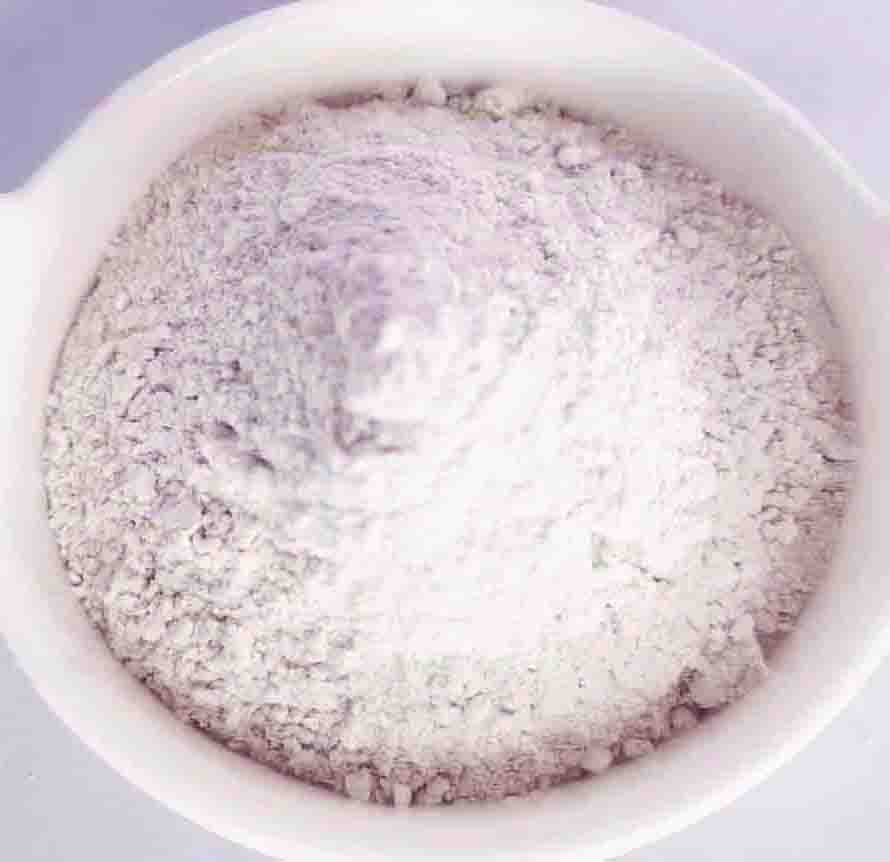Matting Wax Powder
Matting Agents
Matting agents are used in achieving matte finishes in various applications. These agents encompass materials like silica, waxes, and fillers, which are blended into coatings and paints. When adding these matting agents, substrates can be endowed with a refined matte appearance. Waxes such as those derived from polyethylene, polypropylene, carnauba, amide, and polytetrafluoroethylene (PTFE) are frequently employed as matting additives.
The purpose of a matting agent is to transform coatings and paints into a medium that yields a subdued, silk-like finish across diverse categories, including furniture and wood lacquers. Whether it’s about enhancing the allure of vintage pieces or elevating contemporary designs, a matting agent’s role is integral. It’s worth noting that the application of matting agents doesn’t compromise the inherent chemical composition or properties of the coatings.
Matting agents, including waxes are a versatile toolkit for attaining matte finishes in various domains, from furniture lacquers to aqueous coatings. Their adeptness at reducing glossiness while preserving the underlying chemistry makes them indispensable for achieving desired aesthetics without compromising structural integrity.
What is Matting Effect?
The matting effect refers to a specific property exhibited by coatings that results in a smooth and understated appearance, characterized by minimal or no noticeable sheen. This effect is achieved through a deliberate alteration in the way light interacts with the coated surface. Unlike glossy finishes that reflect light uniformly and produce a shiny appearance, the matting effect reduces glossiness by causing light to scatter in various directions upon hitting the surface. This scattering of light creates a surface appearance that is notably less glossy and reflective.
The matting effect is particularly desirable in applications where a subdued aesthetic is preferred over a high-gloss appearance. It finds significance in diverse sectors such as interior design, furniture manufacturing, automotive coatings, and artwork preservation. By employing matting agents like waxes, manufacturers can manipulate the way light is reflected off the surface for the desired matte finish.
Types of Matting Agents in Coatings
Achieving the desired matting effect in paints and coatings involves the strategic use of various raw materials, both organic and inorganic, that serve as matting agents. These agents play a crucial role in altering the surface characteristics of the applied coatings, ultimately resulting in the desired matte finish.
Organic Matting Agent
Organic matting wax agents are derived from materials such as polyethylene and polytetrafluoroethylene. These matting waxes are carefully selected for their ability to create the desired matte finish by modifying the way light interacts with the coating’s surface. When incorporated into paint or coating formulations, these wax-based matting agents introduce microscopic irregularities to the surface, which in turn disrupt the uniform reflection of light.
Inorganic Matting Agent
Inorganic matting agents, with silica being a prominent example, are minerals that are finely ground into particulate form and integrated into coatings. Silica matting agents are known for their effectiveness in achieving precise control over the degree of gloss reduction. Silica particles are designed to have controlled particle sizes, allowing manufacturers to fine-tune the extent of matte effect desired in the final coating.
Matting Wax Additives
Matting waxes also impart slip resistance to the coating, which affects the tactile feel of the surface. This can prevent issues like sticking or dragging when objects come into contact with the coated surface. The incorporation of matting waxes can enhance the coating’s mar resistance, so the surface remains relatively unscathed when subjected to friction or minor abrasions.
Matting waxes can also help in mitigating blocking, in which two painted surfaces stick together when in direct contact for an extended period. By forming a barrier at the surface, matting waxes contribute to reduced blocking tendency. Furthermore, the presence of waxes can enhance the coating’s resistance to abrasion, making it more durable and less prone to wear and tear.
Advantage of a Matting Wax from Tripletchem
The advantages of using a matting wax from Tripletchem offers significant benefits in various applications. Here are some of the advantage of what you can get in adding matting wax in your formulation.
Easy to Disperse
When a matting wax exhibit easy dispersibility, it translates to a smoother and more consistent incorporation of the wax particles into coating formulations. This characteristic significantly streamlines the manufacturing process. Formulators and manufacturers can achieve a homogeneous distribution of the matting wax throughout the coating material without the need for excessive agitation or complex mixing procedures. This not only saves time and resources but also enhances the reproducibility of the desired matte finish across batches.
Better Suspension in Liquid Coating Formulations
The benefits of better suspension behavior are important. It simplifies the formulation process. Coating manufacturers can achieve a homogeneous dispersion of the matting wax without the need for constant agitation or complicated mixing techniques. This not only streamlines production but also enhances the reproducibility of the desired matte finish across different batches.
The uniform suspension of matting wax particles directly impacts the quality and appearance of the final coated surface. When wax particles are evenly distributed, the matte effect is consistently achieved, resulting in a visually appealing and professional finish. Poor suspension behavior could lead to uneven coating thickness and patchy matte appearances.
No Effect on Drying Properties
Adding matting wax additive guarantees the consistency and reliability of the coating process. Manufacturers can confidently incorporate the matting wax into their formulations without the need for adjustments to accommodate changes in drying behavior. This not only saves time and resources but also enhances production efficiency.
Introduction of the matting wax won’t lead to unexpected complications during drying or curing. The absence of drying-related issues reduces the risk of defects, rework, or the need for additional finishing steps. Coatings that dry or cure unevenly could exhibit flaws, irregular textures, or diminished longevity. The Tripletchem matting wax’s ability to seamlessly integrate without interfering with drying properties results in a professionally finished surface with the intended matte effect.
High Matting Power with Small Amounts
Matting wax from Tripletchem offers high matting power with small quantities. It enables cost-effective production, grants control over aesthetics, and maintains formulation integrity. This attribute underscores the value of an efficient and effective matting wax that enhances both the visual appeal and practicality of the finished product, while also supporting the bottom line of manufacturers.
High Shear Stability
High shear stability and resistance to overgrind safeguard the performance of the matting wax throughout the manufacturing chain. This includes transportation, storage, and application processes, where the wax must maintain its effectiveness and integrity. Manufacturers can confidently integrate the matting wax into their coatings, assured that its properties won’t be altered by the mixing process. This stability ensures that each batch of coating maintains the intended matte finish consistently.
No Haze Formation
Haze formation are unintended appearance of a cloudy or milky visual effect on the surface of a coating, which can compromise the clarity and overall aesthetics of the finish. The incorporation of matting wax into the coating formulation does not lead to the creation of cloudy or hazy spots on the surface. Coatings that suffer from haze formation can appear less professional and visually pleasing, detracting from the desired matte effect. The Tripletchem matting wax’s ability to prevent haze ensures that the coating maintains a crisp and uniform appearance.
No Settling in the Coatings
The matting wax particles remain in a state that is easily dispersible and does not clump together into rigid, compact structures. This characteristic is crucial for maintaining the homogeneity and effectiveness of the coating, from the moment it’s prepared to its eventual application. It supports the usability and reliability of the coating. The prevention of hard sediment formation also contributes to the quality of the coated surface. When hard sediments form, they can lead to uneven distribution of the matting effect, resulting in inconsistent matte finishes.
How to Add Matting Wax to Achieve Matting Finish
The gloss level is quantified as a percentage, with varying degrees from standard matt (around 30% gloss) to satin (around 60% gloss), gloss (around 70% gloss), and high gloss (around 80% gloss). These values are approximate and typically allow for a variance of up to 5% due to inherent production variations.
As the particle size of the matting agents is reduced through the use of a pearl mill, the gloss level of the dispersion can actually increase. This might seem counterintuitive since the goal is to achieve a matte finish. The increased gloss occurs due to the reduction in particle size which can enhance the reflective properties of the dispersion.
To counteract this increase in gloss and achieve the desired matte finish, a higher dosage of matting agents is necessary. Because the smaller particles can contribute to higher gloss, a greater amount of matting agents needs to be added to achieve the intended level of matte appearance. This adjustment is a critical aspect of the formulation process, as it allows for precise control over the final gloss level of the coated surface.
PE wax is a high-quality wax with matting function. When used in paints and coatings, the matting effect is very detailed.


